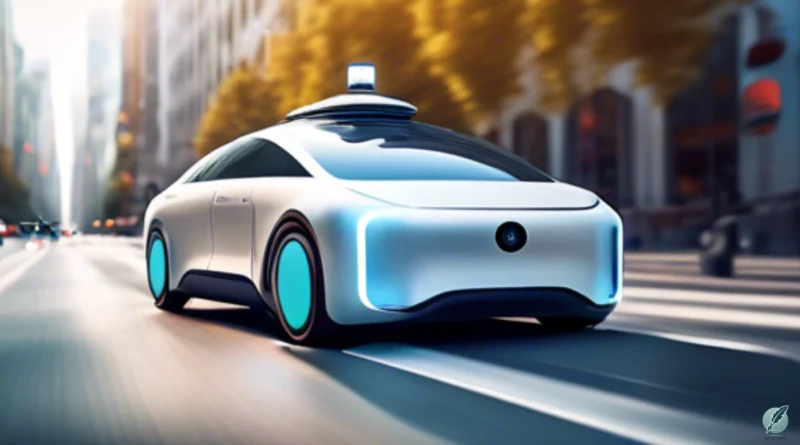The Future of Autonomous Vehicles: What to Expect in the Next Decade
The concept of autonomous vehicles has evolved rapidly over the past decade, moving from science fiction to a promising reality. As we look toward the next ten years, it’s evident that self-driving cars are poised to change America’s roads and cities dramatically. From enhanced safety to improved mobility and reduced emissions, we’re likely to see in the Future of Autonomous Vehicles are remarkable. Let’s delve into what we can expect in the near future for this transformative technology.
1. The Future of Autonomous Vehicles in Safety and Technology
Safety remains the primary driver behind autonomous vehicle (AV) development. In America, over 90% of car accidents are attributed to human error, so the adoption of autonomous technology is expected to dramatically reduce road fatalities. The next decade will bring about substantial improvements in AV technology, including more reliable sensors, real-time data processing, and AI-driven decision-making.
With advanced machine learning and enhanced LiDAR and radar systems, autonomous vehicles will become more responsive to complex road environments, navigating dense traffic, adverse weather, and sudden obstacles with increased accuracy. This improved reliability will make AVs safer and more trustworthy, encouraging wider adoption.
2. Smart Infrastructure to Support The Future of Autonomous Vehicles
One of the biggest hurdles for autonomous vehicles is navigating American roads that are not built for them. To support AVs effectively, we’ll likely see the U.S. investing in “smart” infrastructure. This includes traffic signals, road signs, and lane markings that communicate directly with AVs, enabling smoother navigation and improving traffic flow.
Many states are already piloting intelligent road systems with the capability to relay real-time traffic data to AVs, helping them make informed decisions. Over the next decade, investments in smart infrastructure will facilitate smoother travel for AVs, particularly in cities with heavy traffic congestion. Smart intersections, real-time congestion management, and dedicated lanes for AVs could become more commonplace in American cities.
3. Reduced Environmental Impact
As autonomous vehicles become more common, their impact on the environment will be significant. Autonomous technology pairs well with electric vehicles (EVs), and many AV manufacturers are developing fully electric models to reduce carbon emissions. This synergy between autonomous and electric vehicles could play a major role in combating climate change by decreasing America’s carbon footprint from transportation.
In addition to lower emissions, AVs will optimize fuel efficiency by using advanced algorithms to drive at consistent speeds and reduce unnecessary braking or accelerating. This efficiency will contribute to less fuel consumption overall, supporting the U.S. in its efforts to create a greener and more sustainable future.
4. Enhanced Mobility for All
Autonomous vehicles hold promise for people who may not have access to traditional driving options, including the elderly, disabled, or those living in underserved rural areas. With autonomous vehicles, millions of Americans could enjoy newfound freedom of movement, helping to bridge mobility gaps and create a more inclusive society.
As AVs become more accessible, we’ll likely see ride-sharing services like Uber and Lyft expanding their autonomous fleets. The introduction of autonomous ride-sharing options will enable people in urban and rural areas alike to benefit from affordable and convenient transportation options without needing to own a car.
5. Changes in Urban Planning and Real Estate
The widespread adoption of AVs will reshape American cities in unexpected ways. Since AVs are designed to move people efficiently, there may be a reduced need for parking spaces, particularly in densely populated urban centers. Parking structures and lots could be repurposed for housing, parks, or other community spaces, making cities more livable.
In suburban areas, where long commutes are common, AVs will make travel time more productive, allowing passengers to work, relax, or entertain themselves during the journey. As a result, we could see real estate trends shift, with more people willing to live further from city centers since AVs will ease the burden of lengthy commutes.
6. Regulatory Changes and Challenges
As the technology evolves, so too must the regulations that govern it. In the next decade, America will see major shifts in policy and legislation concerning autonomous vehicles. This includes updates to safety standards, licensing for AV manufacturers, and addressing liability in the event of accidents involving AVs.
Government agencies such as the National Highway Traffic Safety Administration (NHTSA) are already working with industry experts to shape the future regulatory landscape. Over time, we may see national standards for AV safety and operations, ensuring uniformity across states and facilitating smoother deployment across the country.
7. Job Market Transformation
The Future of autonomous vehicles will inevitably impact the job market, especially in fields like trucking, delivery services, and traditional taxi driving. While AV technology might reduce demand for certain jobs, it will also create new opportunities in fields such as AV maintenance, AI programming, data analysis, and cybersecurity.
Moreover, training programs will likely emerge to reskill workers in impacted industries, preparing them for roles within the growing AV sector. The technology’s rise might also inspire increased interest in STEM fields, encouraging more Americans to pursue careers in robotics, AI, and engineering.
Conclusion
The Future of Autonomous vehicles are on the verge of transforming America’s transportation landscape. The next decade promises innovations that will not only enhance safety and convenience but also bring environmental benefits, reshape urban planning, and open new doors for people who rely on improved mobility options. However, challenges related to regulation and the labor market must be addressed to ensure a smooth transition. As AV technology advances, we’ll witness a more connected, sustainable, and efficient future on the road.
By keeping up with developments in this fast-evolving industry, Americans can anticipate an exciting journey toward a world where autonomous vehicles become a common sight on the highways and streets of the nation.
If You’re interested in Electric Cars and want to buy then Must Read Top 10 Electric Cars of 2024: Which One is Right for You?.


Pingback: Top 10 Car Maintenance Tips To Ensure Your Car Runs Smoothly